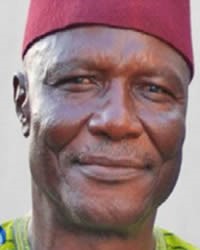Buwal in Cameroon

Photo Source:
Anonymous
|
Send Joshua Project a map of this people group.
|
| People Name: | Buwal |
| Country: | Cameroon |
| 10/40 Window: | No |
| Population: | 14,000 |
| World Population: | 14,000 |
| Primary Language: | Buwal |
| Primary Religion: | Ethnic Religions |
| Christian Adherents: | 35.00 % |
| Evangelicals: | 1.20 % |
| Scripture: | New Testament |
| Ministry Resources: | Yes |
| Jesus Film: | No |
| Audio Recordings: | Yes |
| People Cluster: | Chadic |
| Affinity Bloc: | Sub-Saharan Peoples |
| Progress Level: |
|
Introduction / History
The Buwal think of themselves as a collection of about 25 clans all speaking the Buwal language. They usually marry amongst themselves, although it is possible to marry someone from outside of the village. It is naturally forbidden to take a bride from within your own clan. Their language is part of the Central Chadic group of languages, and is somewhat related to the Hausa of Nigeria, and more distantly related to other Afro-Asiatic languages such as Hebrew, Arabic, and the Berber languages.
In past centuries, even up to around the time of Cameroon independence in 1960, the Buwal were fearful of the Fulbe, who were strong horsemen and would capture the local people as slaves. As such, the Buwal lived on the Mse mountain, which gave them protection. Since independence, the threat has ceased as the government has maintained a peaceful rule. At the government's insistence, the Buwal came down to live on the plain around the mountain rather than live on the mountain.
The Buwal have traditionally followed what is typical of African religion, believing in the animistic spirits of animals, rocks, and trees. They pray to and honour their deceased ancestors, and are fearful of sorcery, which is practiced by some. Above these, they know of the sky God, who is above all of these spirits, whose name is Galzavay (also their word for sky.) Because of the animosity between them the Buwal were resistant to Islam, the religion of the Fulbe, though this has now changed in that the Buwal have become far more open to more outside influences. The Buwal now have a chief who is Muslim. This is not unusual for the area, even for those villages where there is not a Muslim majority.
In the 1970s, the first African Christian missionaries came to the area. This co-incided with the establishment of a government primary school, which taught in the language of French. In this respect, Christianity and formal education were seen as two sides of the same coin, and signals of progress. At first, both were resisted. Government officials would have to use all manner of persuasion to try to get children to attend school. And those who showed interest in Christianity, often the young, would be punished or persecuted. However, over time, this attitude changed as more and more people saw the benefits of Christianity and education, and these became more accepted. Nowadays, Christianity, Islam, and the traditional religion largely live side by side without tension or animosity. Peace or harmony, or at least civility is achieved by the commonality which they share, which includes a belief in one supreme God.
When Christian missionaries first arrived they had to teach in Fulfulde, the language of the Fulbe, which had become the market or vehicular language of the wider region. Fulfulde does have its own Bible and the first generation of Christian converts learned to read Fulfulde. Therefore Fulfulde is often the main language used in church, but efforts were always made to translate sermons and teachings into the village language.
Since 2004 the Buwal have been working on their own alphabet and writing system. They have been translating certain Biblical texts into Buwal. An interchurch translation committee was formed, and in 2012 set itself the goal if translating the whole gospel of Luke.
Where Are they Located?
The Buwal people reside in the Mandara Mountains, in the Far North region of Cameroon. They live in neighbourhoods set around a mountain that they call Mse. Together, these neighbourhoods are known in the wider region as the village of Gadala, south of the administrative center of Mokolo, to the west of the regional capital of Maroua. Each neighbourhood has a sub-chief, which together are presided over by the Buwal village chief.
What Are Their Lives Like?
Most Buwal are subsistence farmers. They are reliant upon the seasonal rains to grow their millet, beans and peanuts. Other crops have been introduced such as corn, soya, onions and rice. The main cash crop is cotton. Nearly all Buwal families now grow cotton to some extent.
The Buwal are a unique people with their own customs, language, system of naming their children, musical instruments, dances, and festivals.
Prayer Points
Prayers for the Buwal village:
For the seasonal rains: June-October. Planting may occur in May or June.
There are regular times of food shortages or famine, especially in August-September when then new crop is not yet harvested.
Water is scarce in certain months, especially March-May. There is a need for more wells.
As more men travel outside of the area, diseases such as AIDS can spread. There needs to be wisdom shown in this regard.
For deeper understanding of the gospel. There is some falling away of previously baptised converts for their lack of Christian understanding.
For the small team of Bible translators and those who may teach them in Buwal literacy, that their knowledge of the gospel may grow.
For story tellers or audio versions of Scripture for those who may be receptive in what is often an oral society.